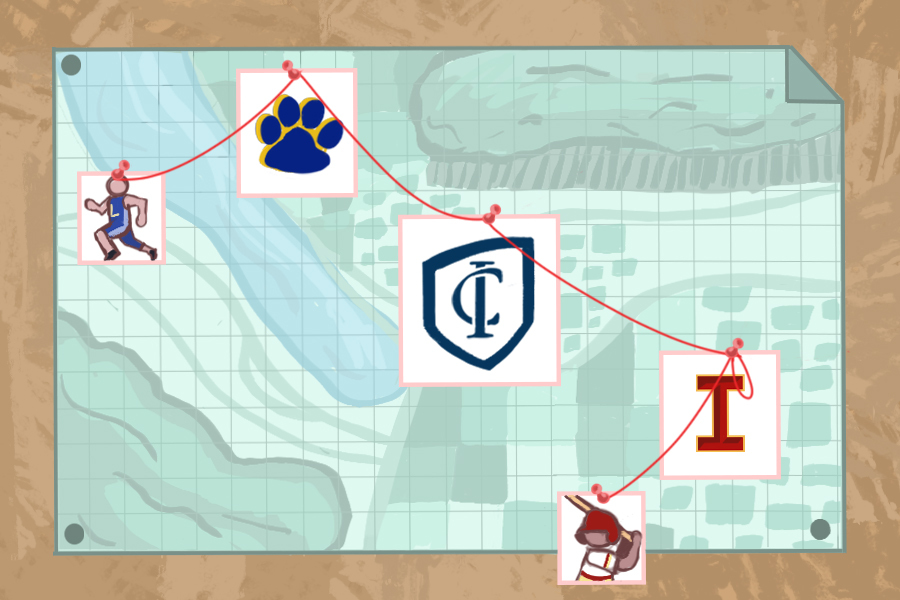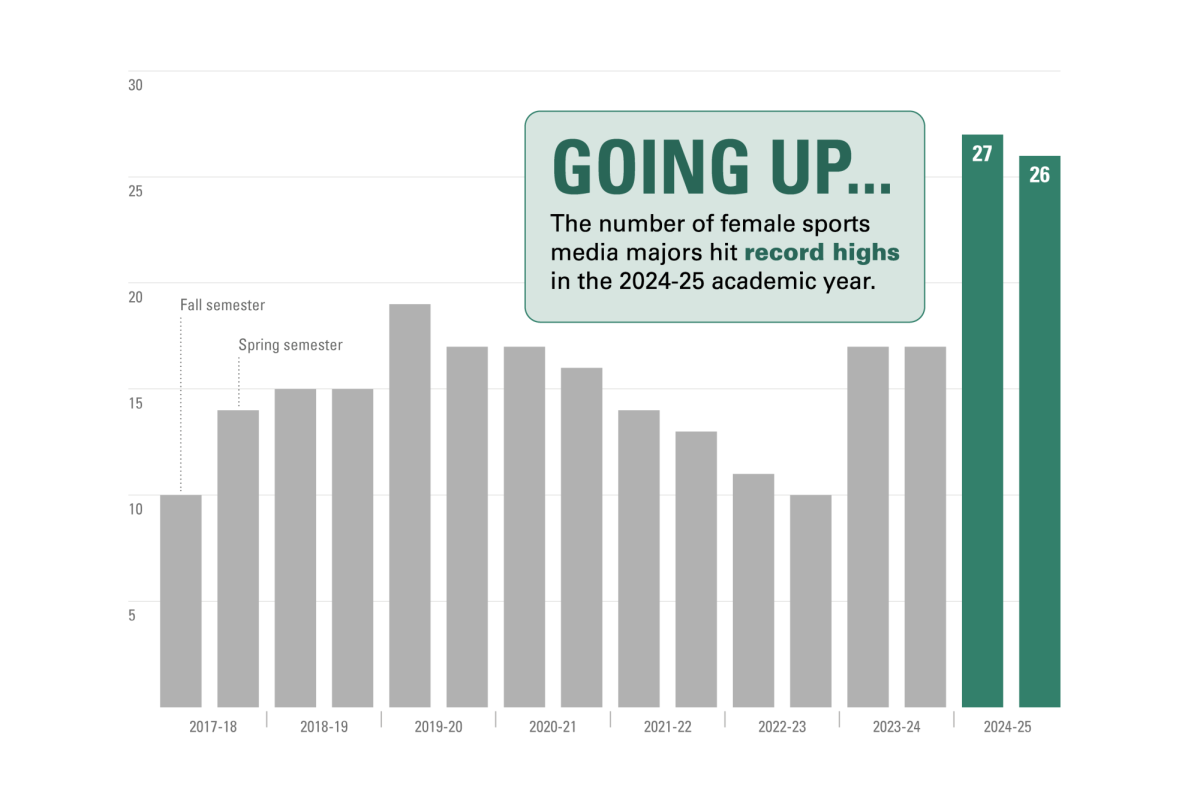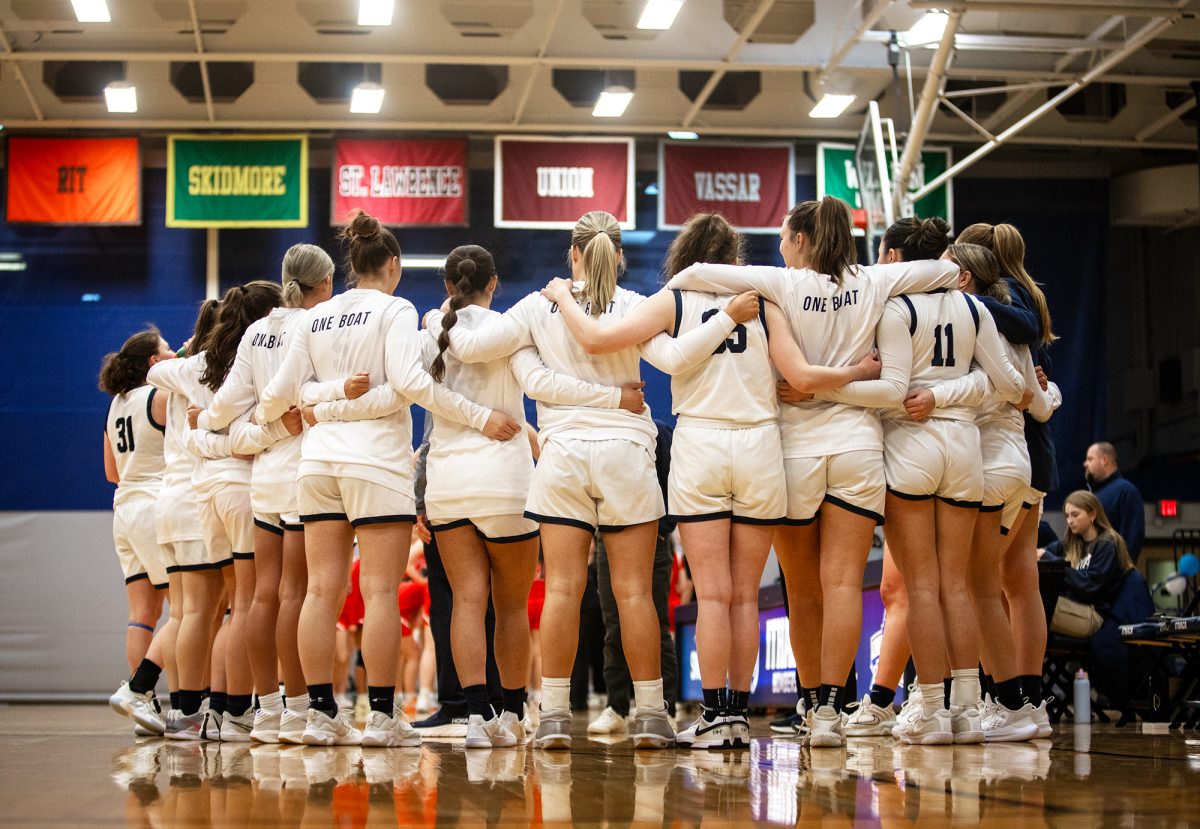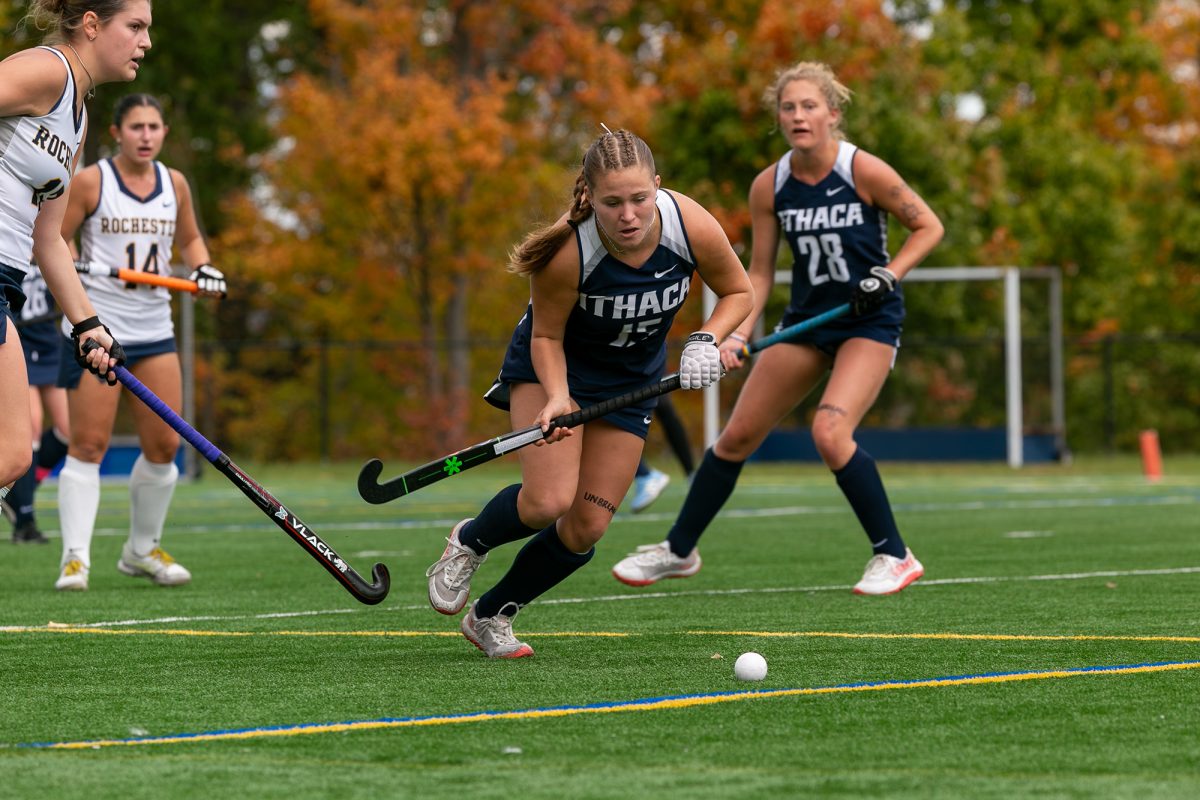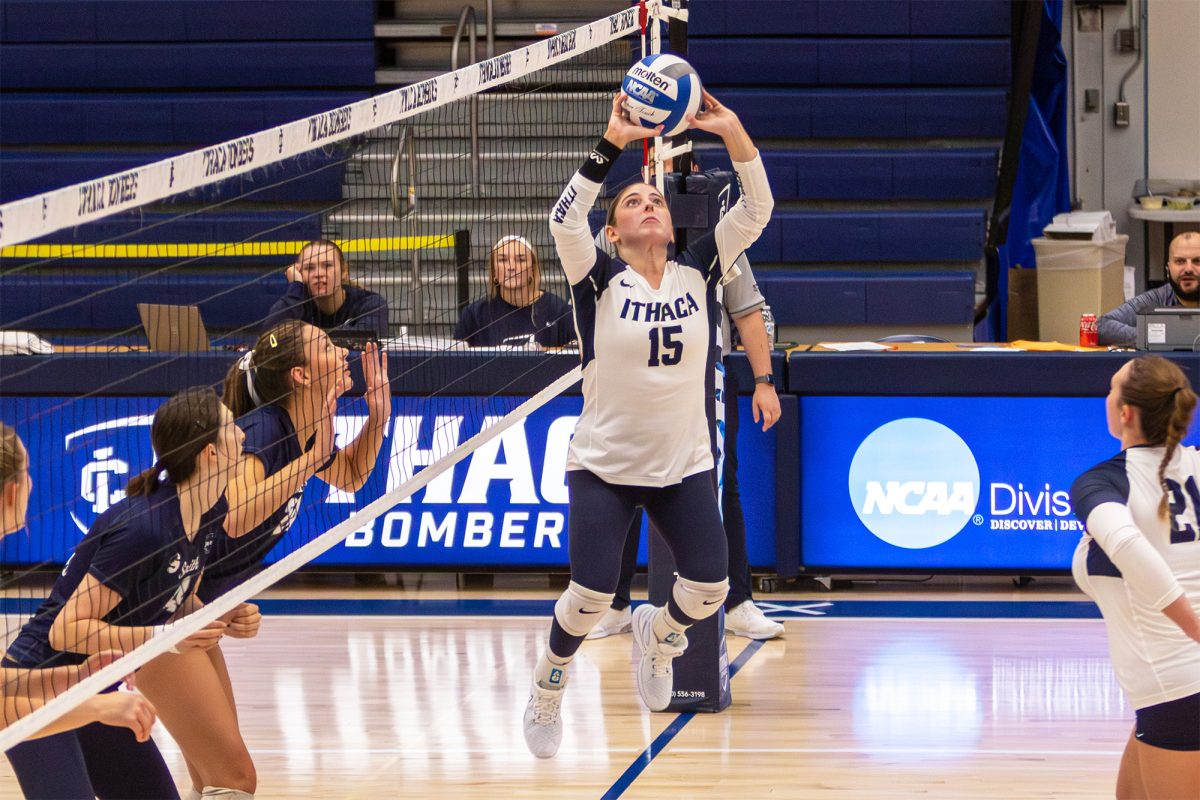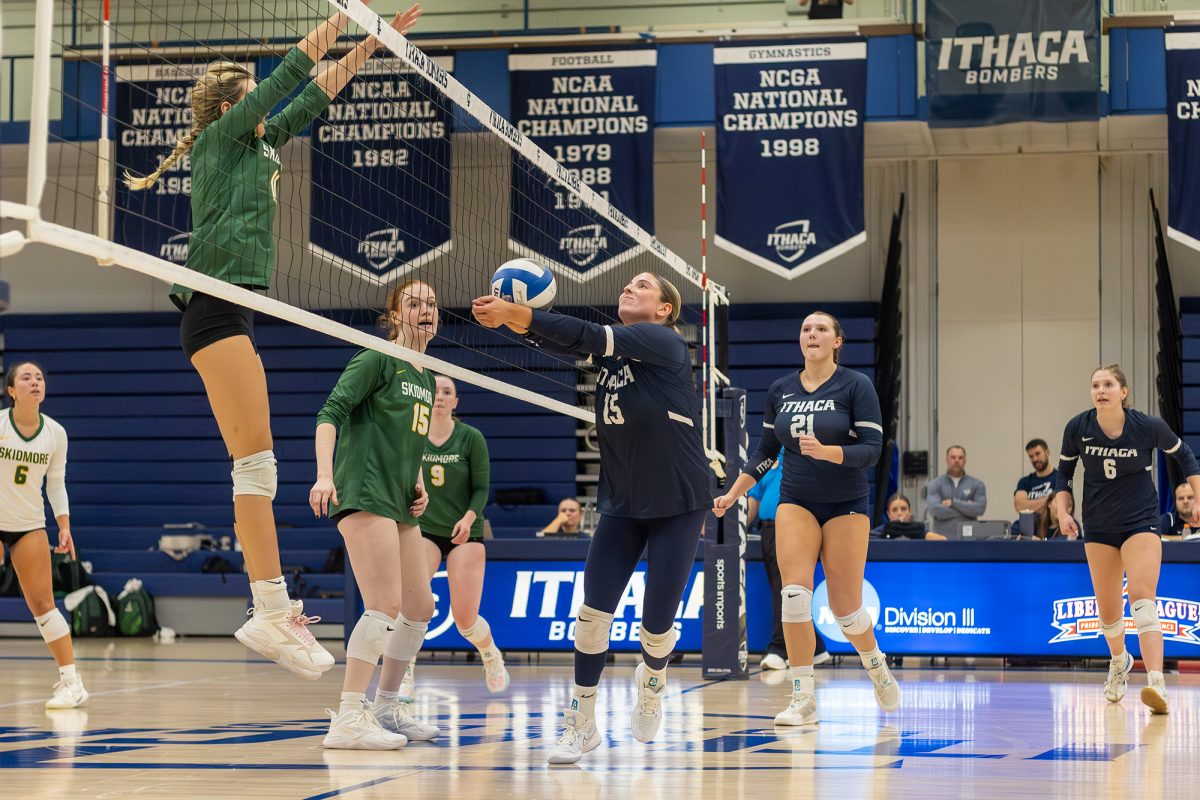Last December, a series of decisions made by five universities and four conferences altered the East Region and provided the Ithaca College football team with a more geographically favorable climate to compete in. While the program may be one of many to benefit from the creation of an exclusively New York Empire 8 conference, logistical questions remain as to how the East Region’s realignment will affect the Bombers and other teams.
The East Region’s realignment is effectively two mergers. One involves the Empire 8 and the State University of New York Athletic Conference, while the other involves the New Jersey Athletic Conference and the Capital Athletic Conference. The CAC has never sponsored football, forcing four of its members, Salisbury University, Frostburg State University, Wesley College and Christopher Newport University, to find other conferences to play in or be independents.
Since conferences with seven or more members receive automatic bids to the NCAA Tournament, the incentive for Salisbury and Frostburg State to join the Empire 8 in 2011 was evident, even though it meant regular trips from Maryland to New York. Empire 8 Commissioner Chuck Mitrano said Frostburg’s and Salisbury’s decision to join the more geographically favorable NJAC initiated the chain of events that led to the realignment. Additionally, Mitrano said he believed the realignment was inevitable.
“[The realignment] is probably the way it should have been, but for whatever reason it wasn’t,” Mitrano said. “It certainly makes a lot more practical sense in a number of other ways as well.”
Frostburg State and Salisbury, along with Wesley, Christopher Newport and a new program at Southern Virginia University, all members of the CAC,will compete in the NJAC, bringing its membership to 10. The conference already saw Buffalo State College leave for the Empire 8 in 2011 and SUNY Brockport leave after last season, and will see Morrisville State College and SUNY Cortland join the conference after this season. Gregory Carroll, Morrisville State director of athletics, said joining the Empire 8 made fiscal sense after the NJAC sought to expand toward the south.
“It was really somewhat foolish for us to continue to see good fortunes for us traveling in that direction when Brockport and Buffalo are other SUNY schools that joined the Empire 8 … and Morrisville State and Cortland were the only teams to make the trips to New Jersey,” Carroll said. “It’s a great thing for us to find other ways to redirect money within our athletic department and realize some savings within our budget.”
The Empire 8 will have nine teams next season, which creates problems with scheduling during the conference season. Though adding a 10th team would remove these issues, Mitrano said he is content with the conference’s upcoming alignment.
“I don’t anticipate doing anything beyond [adding Cortland and Morrisville State],” Mitrano said. “I think that having that number allows institutions to schedule non-conference rivals or traditional competitors. You have your eight conference games and two non-conference games. I think the numbers work well for us, and barring some unforeseen circumstances, there wouldn’t be any plans to go beyond that.”
Both Carroll and Cortland Athletic Director Mike Urtz said the NJAC’s decision to expand further south forced them to reconsider their respective school’s membership in the conference. Carroll and Urtz had discussed moving to the Empire 8 when Buffalo State and Brockport made their moves, but chose to stay put, citing their loyalty to the NJAC — the first conference either program had been in.
With Morrisville State and Cortland leaving the NJAC, they will not have to follow that conference’s rule limiting rosters to 100 players. Urtz said he is looking to expand Cortland’s roster for next season in a move that will reduce the potential financial benefits the program would see as a result of the switch, since the increase in players will require the program to spend more money on equipment and expand its facilities to accommodate more players. Though the increase in players adds some expenses, Urtz said he is hopeful that the reduced travel cost as well as the localized nature of the team’s schedule will help offset that cost.
“I would think with the great tradition and all the local schools playing in the Empire 8, we would get a better visiting crowd, which would help in ticket sales,” he said.
The Cortaca Jug functions as the obvious example for Urtz’s ticket sales hopes. Cortland’s move to the Empire 8 ensures that the game will continue to be played, despite the fact that events last year led to rumors that the game would be discontinued. Head coach Mike Welch said Cortaca’s status as a conference game gives it more importance.
“Not that it needed anything more, but certainly it’s going to be more relevant,” Welch said. “It could be a conference championship game, that’s something that could happen for either team.”
With Cortaca set to be a conference game, the Bombers will have to add another non-conference opponent for next season. Union College will remain on the schedule for next year, and Welch said the other non-conference game will not be against one of the upper echelon teams in the Division III. Susan Bassett, director of intercollegiate athletics and recreational sports, said the program would be looking to schedule a team in the Liberty League.
With Cortland and Morrisville State set to enter the conference, four of the Empire 8’s nine teams will be public universities whose tuitions cost far less than Ithaca’s $39,532. Both Cortland and Morrisville State’s out-of-state tuition is $15,820, 60 percent cheaper than South Hill’s. Additionally, Cortland and Morrisville State’s in-state tuition is $6,170. Bassett said Ithaca’s status as a private college could affect its ability to stay competitive in the conference. Since Division III schools cannot give any form of athletic scholarships, there is no easy way for the school to reduce the potentially pivotal difference in tuition.
With both schools set to enter a conference with no roster limits, each program will have incentive to recruit more players and will be one of the cheapest schools to attend in the conference. Ithaca, on the other hand, will be the most expensive school in the Empire 8 to attend. Despite the unfavorable financial comparison, Bassett is confident the South Hill squad will be able to compete in the conference.
“Obviously competitiveness is a concern with all of our programs,” Bassett said. “Certainly that’s a concern with football. I have confidence in the leadership in coaching staff in Coach Welch and everybody on that staff to recruit appropriate student-athletes to Ithaca College. I’ll put our tradition and our way of doing things up against anybody in the country.”





